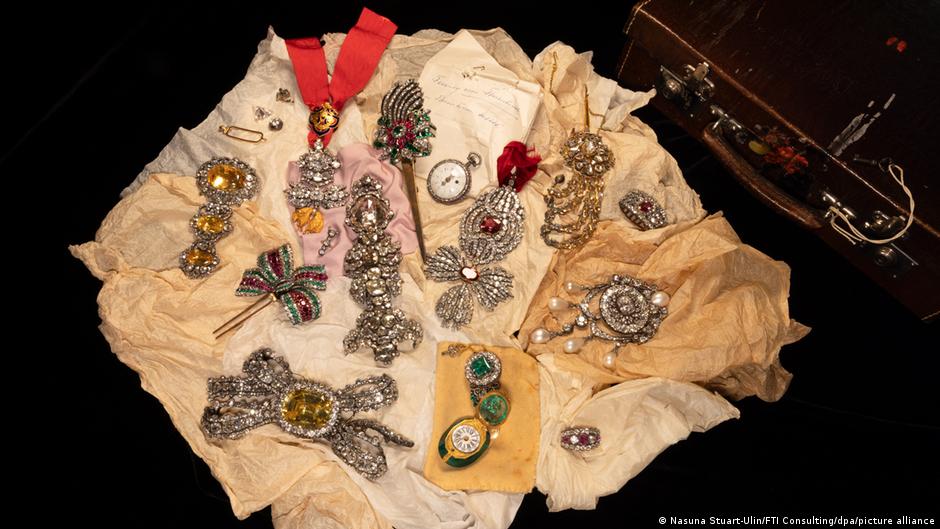The family of Austria’s last emperor announced plans on Thursday to publicly display a private jewelery collection hidden in a Canadian bank vault since the Second World War.
The whereabouts of the jewels remained a family secret for more than a century.
What do we know about the Habsburg Gem Treasure?
When Austria became a republic in 1919 after being exiled from Austria after World War I, the family of the last Austrian Emperor had most of his property confiscated.
Only small amounts of personal property – including pieces of jewelery listed as private – were allowed to be transferred to Switzerland. The official crown jewels remained in Vienna and are still on display there today.
After the death of her husband, Emperor Karl I, in 1922, Empress Zita ordered her descendants to keep the existence of the jewels a secret for 100 years for security reasons.
She and her children later faced persecution by the Nazi regime due to their vocal opposition to Hitler’s dictatorship. The family fled to Canada via France and Portugal shortly before their Belgian home was bombed by the Nazi German Luftwaffe at the outbreak of the war.
She crossed the Atlantic with her collection of jewelery in a brown suitcase and delivered them to safety in Quebec in 1940.
The jewelery also includes the famous Florentine Diamond
The surviving pieces include the famous Florentine Diamond, which people outside the family long thought was lost, perhaps stolen.
The walnut-sized yellow diamond was once one of the largest cut diamonds in the world, although amid advances in mining it was no longer up to modern standards. It was one of the treasures of the Grand Duke of Tuscany in Florence and is also known as the Tuscan Diamond. When the last member of the Medici family of Florence died it passed into Habsburg hands through marriage.
The collection also includes objects once belonging to Empress Maria Theresa, Queen Marie-Antoinette and Emperor Franz I. The authenticity of the jewelery has been verified by independent experts.
Habsburg family thanks Canada
one in statementThe head of the family, Karl von Habsburg, said the time had come for the public to see the jewels.
He expressed Canada’s gratitude, saying, “As descendants of Emperor Carl I and Empress Zita, we are proud to share these culturally and historically significant pieces with the public.”
“We want to express our gratitude to the people of Canada who provided a safe haven for our family in 1940, protecting them from extremely challenging circumstances.”
Von Habsburg said he had learned about the hiding place only last year. Then his two cousins gave him information about the safe deposit box. The emperor’s grandson said the jewels were expected to be put on display soon — initially in Canada rather than Austria.
The collection is now held in a Canadian trust, of which the Habsburg descendants are the beneficiaries. It will remain in Canada and will be made publicly accessible in the near future, details of which have yet to be announced.
The Habsburgs, with some interruptions, provided several Holy Roman kings and emperors from 1273 onwards. After the dissolution of the empire in 1806, they became the Austrian royal house, which lasted until the end of World War I.
Edited by: Zack Crellin






Leave a Reply